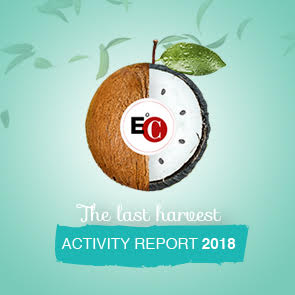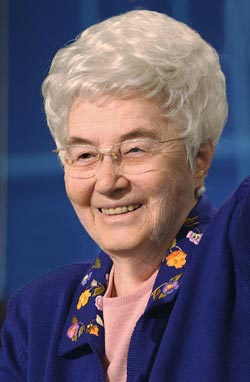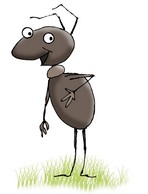Faithfulness and redemption/1 - The "study" of the biblical Book of Ruth (and Naomi) begins, one of the most beautiful and loved ones
By Luigino Bruni
Published in Avvenire 28/03/2021
«In the days of Ruth, the situation in Palestine was such that if a judge said to someone: "take that speck of dust out of your eye", he did not hesitate to reply: "and you the plank that you have in yours"». Louis Ginzberg The Leggends of the Jews, VI
In this small narrative (85 verses in total, 55 dedicated to human dialogues), in a sense God puts himself aside, instead it is his heart that reveals itself together with some essential dimensions of the female soul.
The small Book of Ruth is among the most beautiful books in the Bible, if not the most beautiful from a narrative point of view. It contains many ethical, social, economic and religious messages, but first and foremost it is a wonderful story, a wonderful tale. It is a family story, a nuptial story, it is a passage from the history of Israel; but above all, it is a story of women, the story of two co-protagonists, so much so that we could even call it the Book of Ruth and Naomi. Because if it is true that Ruth emerges as a simply splendid woman, the figure of her mother-in-law Naomi is in no way less fascinating or of lesser greatness, and the same can be said of the relationship between them. The story of two single women, foreign women, migrant women, women who are on their way, female friends (an etymology of the Hebrew name Ruth is "the companion"). A story that takes place along the road, in the fields, in the courtyard of the house, almost exclusively outdoors. It is not the history of a palace or a temple. Everything revolves around that special, tenacious and unique relationship with life that is typical of women.
A book that not only speaks about women, but from an entirely female perspective. There are expressions, scenes, grammatical details that seem to come directly from the linguistic and intimate repertoire of women. So much so that some authors, both male and female, have ventured (the unlikely) hypothesis that the author of the book is a woman: (Irmtraud Fisher, "The Book of Ruth as exegetical literature").
In fact, we know very little about the history of this book - or any biblical book. Certainly whoever wrote it was a master of spiritual traditions (and not just Hebrew ones) and of the language he or she uses in all its potential and nuances, a connoisseur of the human soul, in particular of the soul of women. Although it is set in an archaic phase of the history of Israel (around the 11th-12th century BC, during the era of the judges, a terrible time), today we know that in all probability the book dates back to the 5th century BC, even if it cannot be excluded that some oral traditions about Ruth and Naomi (perhaps of a different origin) already circulated before and during the Babylonian exile. Thinking of it as a post-exile book helps to understand some of its essential aspects: the foreign land, widowhood, loneliness, the radical insecurity regarding the future, redemption. Within all that veritable desolation, a new life begins. There was no better story for Israel to hear in that time of ruin and desolation than this one. Ruth is also a flower born out of evil.
The Book of Ruth occupies an important place in the Greek Old Testament, or Septuagint. We find it nestled between the Book of Judges and the Book of Samuel. In the Jewish tradition (the Masoretic Text) Ruth is instead one of the Five Megillot or Scrolls, liturgical books. We can read it in the "Festival of Weeks" (Shavuot), in Greek Pentecost, originally a feast of the harvest, celebrated seven weeks after the offering of the first sheaf of barley on the day after Easter. The story of Ruth is wrapped in the atmosphere of the harvest; its first smell is that of wheat and the threshing floor. The gestures with which many artists have fixed the image of Ruth over the centuries is that of the gleaner.
The Book of Ruth is also at the heart of the Bible because many of its rivers and underground veins flow into it. In order to understand it in depth and in all its many allusions, we would need to read the entire Bible. And, without knowing Ruth, we cannot understand the decisive passages in the New Testament, starting from the first words of the first Gospel (the Genealogy of Jesus), on to the words of the disciple: «Teacher, I will follow you wherever you go» (Matthew 8,19), and coming to an end at Bethlehem. In the Book of Ruth, we hear a clear and strong echo of the central figures of the Bible: Abraham, the wandering Aramean, the patriarchs, Joseph in Egypt, Moses and the Law, all the prophets starting from the relationship between Elisha and Elijah. The countryside where the story unfolds is made of fields of friendship and fraternity, not the fields of Cain («While they were in the field... », Genesis 4,8). And above all David, the great-grandson of Ruth the Moabite. The Book of Ruth is also a distillation of the whole Bible, a sublime extract of feminine fragrance.
However, two episodes need to be looked at closer. At the origin of the stories of Ruth and Boaz, the man who will become her husband, there are two cases of incest. Ruth is the heir of Moab, the son born from the union of Lot (drunk) with his eldest daughter, when the daughters committed incest to secure an offspring after the death of their husbands in the destruction of Sodom (Genesis 19). Boaz, on the other hand, descends from the union between Judas, one of Jacob's sons, and his daughter-in-law Tamar, who had disguised herself as a prostitute so as not to be recognized by her father-in-law (Genesis 38). Two cases of incest wanted and created by women, to obtain denied descendants, to continue life. The story of Ruth is also the recapitulation of those ancient traditions, it is the redemption of that distant pain, but in the relational talent, that Ruth shows in conquering Boaz there is also a trace of the talents of those ancient women.
When beginning a commentary of the book of Ruth, it is necessary to try to answer an essential question: where is God in this book? In Ruth, God steps aside to let man speak and above all to give space to women, their words, their gestures, and their souls. This is perhaps the most important theological message of the book: when the Bible meets the greatest human words it silences God and makes men and, sometimes, women speak. Ruth is a book made up of the words of women and men - out of 85 verses in total, 55 are consist in dialogues - to which the revelation of some essential aspects of the biblical God is entrusted: love (hesed), faithfulness, justice, redemption of the poor. Because while it is true that the Bible contains a revelation of God, it is above all human beings who tell us who the God of the Bible really is. Not only when they pray in the psalms, or when speaking in the words of the Law and the prophets; Biblical men and women tell us who God is even when they simply speak to us of human actions. Here too lies the reciprocal nature of the «image and likeness of God» (Genesis 1,27): if we resemble him, God also resembles us. Therefore, if you want to know the biblical God, do not seek him only in creation, in the prophets or in the burning bush; look for Him in the words and gestures of Naomi, Ruth and Boaz as well. Here too lies the infinite, marvelous true secularity of the Bible, a great epiphany of God through the epiphanies of men and women, who in the ordinary exercise of their humanity have told us something important about God - and continue to tell us again.
Finally, there is an entirely human note in the book of Ruth that stands out above the others.
The Bible is full of voices, of vocations, of men who receive a calling, who dialogue with God and then more often than not leave to carry out the mission that they have received. We could also tell the Bible as a succession and intertwining of these voices and dialogues. These divine voices, however, are not present in the Book of Ruth. There are no angels or Elohim to call upon its protagonists, there are no manifestations of God, and hardly even his name is present. Naomi and Ruth "get up" and set out not as a response to an external voice. The voice that calls them making them rise, walk and then return is entirely internal, and hence we as readers cannot hear it, we can only see its effects. Perhaps because the voices that move women are incarnate whispers, moans of life, signs written in an invincible vocation to life. Naomi and Ruth seek and pursue life, and thus truly live their vocation. The God of life sees these entirely human actions, recognizes them as his own, and adds his chrism to them. Then he says to us: "Do you want to understand who I am? Look at Ruth and Naomi".
It seems that in order for biblical men to move, they need to hear the voice of God calling them by name. Biblical women almost always just get up and leave and that’s it, they almost always leave alone, in a solitude of their own even when in company and sorority - they leave to live and to make others live. Ruth and her sisters - Abigail, Anna, Rizpah, Elisabeth, Mary.
There is perhaps something of the female way of living vocations in this - I always feel deeply uncomfortable when it comes to talking about the soul of women. When women speak of their vocational stories, they often tell very different stories. The calling and the solemn and clear encounter with a divine voice are not always there; in order to set out with their typical tenacity and fidelity, what is important are the human voices and different encounters with people of flesh and blood, perhaps even with the guardian of an empty tomb. They have the rare ability to discern the divine character in human voices, they know, through a mysterious spiritual instinct, how to find the infinite in the smaller details, and they know how to recognize the eternal in a child. They carry life within themselves to give life, and the God of life gave them the gift of feeling and touching Him within life - religions and dogmas would have been very different if they had been told by women.
«So God created mankind in his own image, in the image of God he created them; male and female he created them». The Bible is also a long explanation-exegesis of this wonderful phrase, placed, not surprisingly, in the first chapter of its first book. The Book of Ruth completes this exegesis, because together with the other books and episodes in the Bible that speak to us of God by talking to us about women, it explains the other half of the image of God - male and female he created them. «In the days when the judges ruled, there was a famine in the land. So a man from Bethlehem in Judah, together with his wife and two sons, went to live for a while in the country of Moab. The man’s name was Elimelek, his wife’s name was Naomi, and the names of his two sons were Mahlon and Kilion. They were Ephrathites from Bethlehem, Judah. And they went to Moab and lived there. Now Elimelek, Naomi’s husband, died, and she was left with her two sons. They married Moabite women, one named Orpah and the other Ruth» (Ruth 1,1-4).








